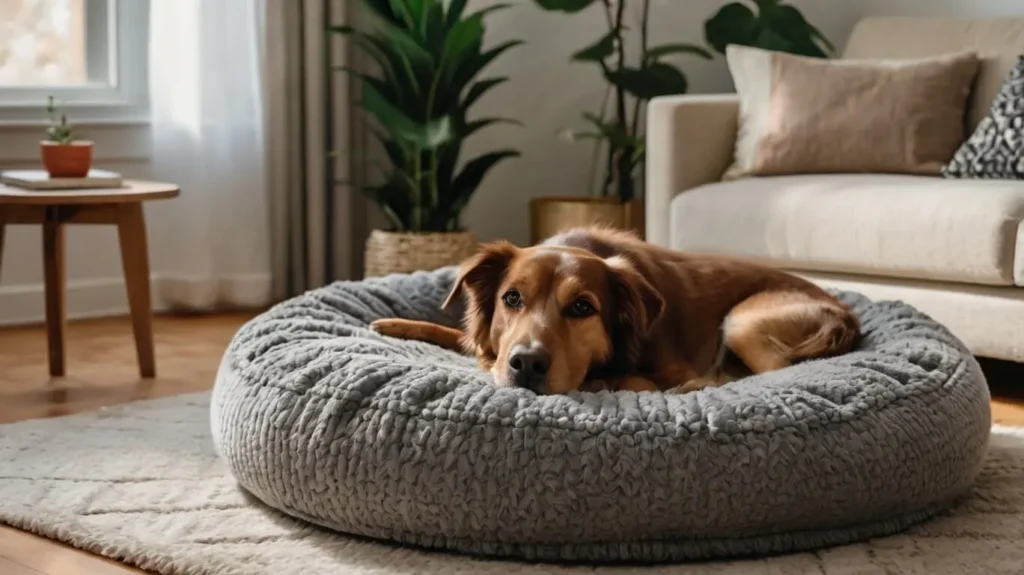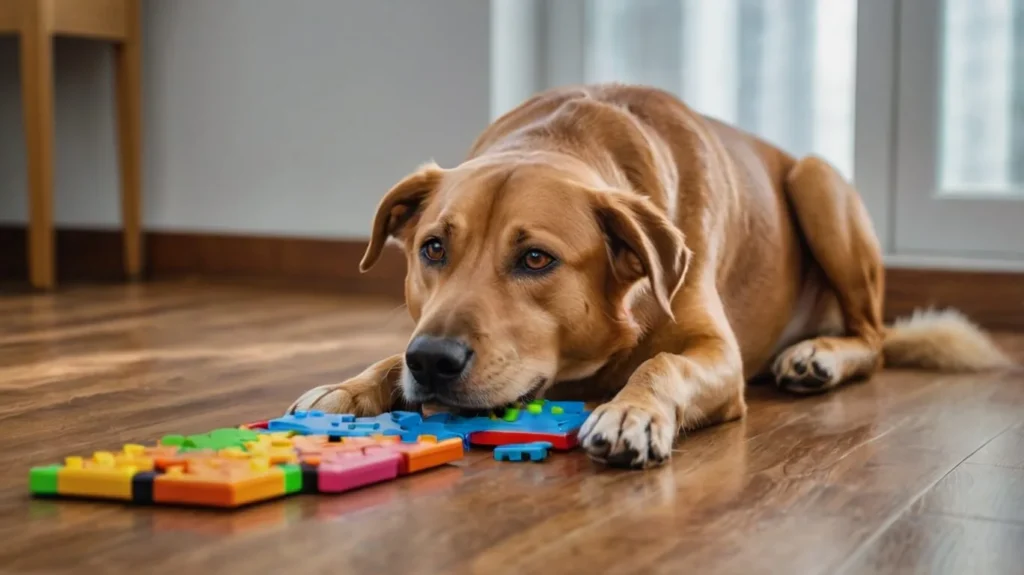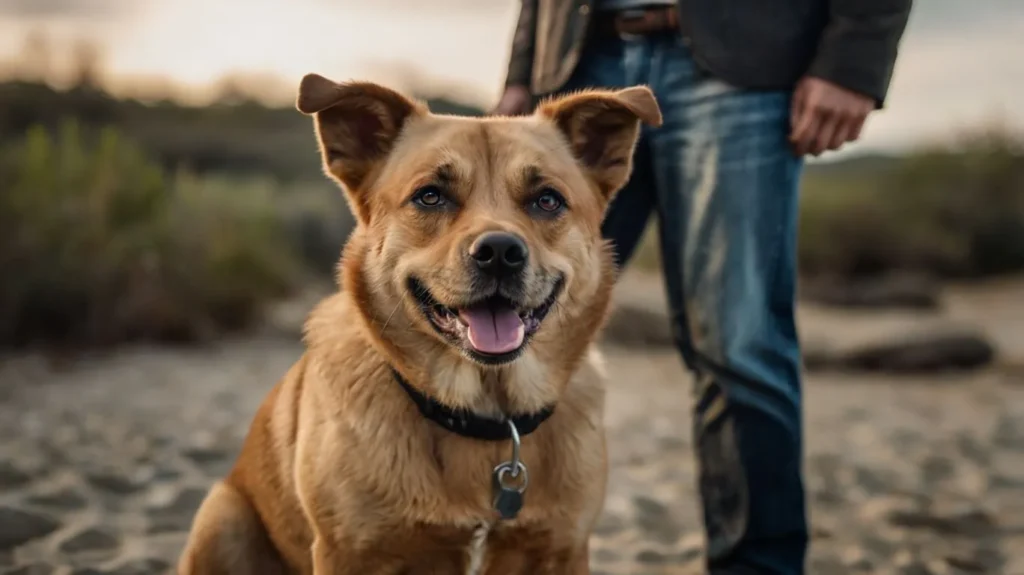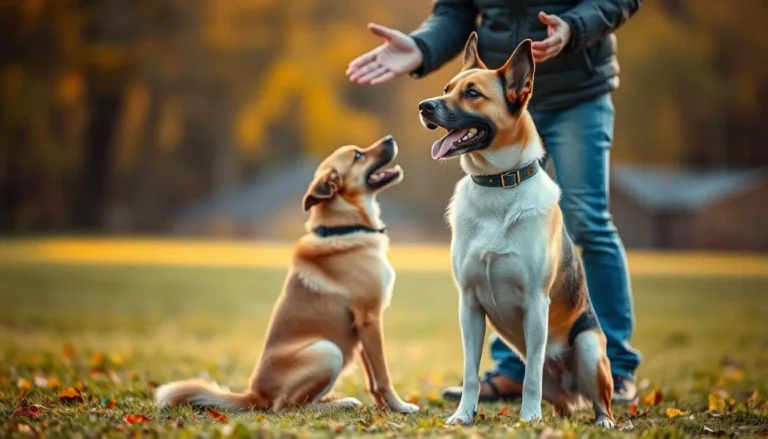The 7 7 7 Rule for Dogs Might Change the Way You Train Your Pup
Bringing a new dog into your home is exciting—but it can also be overwhelming. Whether you’re adopting a rescue, bringing home a puppy, or fostering a dog temporarily, one thing is crucial: how you handle the first few days and weeks can shape your dog’s entire future. That’s where the 7 7 7 rule for dogs comes in.
The 7 7 7 rule is a simple yet powerful guideline used by professional dog trainers and rescue organizations to help dogs transition smoothly into a new environment. It breaks down the early adjustment phase into manageable timeframes—7 seconds, 7 minutes, 7 days, and 7 weeks—each representing a key milestone in building trust, confidence, and routine.
Understanding this rule can transform how you train, bond with, and support your pup—especially during those crucial early days. In this post, we’ll explore what the 7 7 7 rule means, how it works, and why applying it can lead to a happier, better-behaved dog.

What Is the 7 7 7 Rule for Dogs?
The 7 7 7 rule for dogs is a widely recommended framework used by dog trainers, shelters, and rescue organizations to help dogs adjust to a new home. It’s not an official scientific formula, but it’s based on consistent behavioral patterns observed in dogs during the transition process. The rule breaks down the early adjustment period into four key timeframes: 7 seconds, 7 minutes, 7 days, and 7 weeks—each with its own psychological and emotional milestone for the dog.
🔹 The First 7 Seconds: First Impressions Matter
Dogs, like humans, can form first impressions very quickly. In the first 7 seconds, your new dog will begin to assess your energy, tone of voice, and body language. This is a critical moment where calm, confident, and friendly behavior on your part will help establish a positive connection.
- Use a gentle tone and relaxed posture.
- Avoid loud voices or sudden movements.
- Let the dog come to you rather than forcing contact.
This brief window sets the tone for how the dog will perceive you as their potential leader or caregiver.
🔹 The First 7 Minutes: Observing and Reacting
During the next 7 minutes, your dog is in full observational mode. They’re scanning their environment, taking in new smells, sights, and sounds, and trying to understand what’s safe and what’s not.
- Let the dog explore at their own pace.
- Provide a calm environment—avoid chaos or overstimulation.
- Limit introductions to new people or animals at this stage.
This short period helps the dog begin to process and adapt without becoming overwhelmed, which is especially important for anxious or traumatized rescues.
🔹 The First 7 Days: Adjusting to a New Environment
The first 7 days are when real adjustment begins. This is when your dog is trying to understand their new routine, territory, and boundaries. It’s also when behavioral quirks may start to surface.
- Begin setting up a routine for feeding, walks, and rest.
- Establish basic rules and boundaries calmly and consistently.
- Avoid overwhelming activities like dog parks, large crowds, or long trips.
Your dog may be shy, withdrawn, overly energetic, or even misbehave during this phase. That’s normal. The key is patience, routine, and gentle structure.
🔹 The First 7 Weeks: Building Trust and Routine
By the seventh week, most dogs begin to feel at home. They’ve likely started bonding with you, understanding your expectations, and responding to training. This is the phase where true trust and companionship start to develop.
- Reinforce positive behaviors with training tools like treats and clickers.
- Keep routines consistent: same feeding times, walk routes, and sleep areas.
- Begin more structured training (e.g., sit, stay, leash walking, crate training).
This is also the stage where dogs show their “true personality,” especially if they were shy or fearful before. They’ll begin to act more naturally, whether that means becoming more playful, protective, or even mischievous!
🔁 Summary
The 7 7 7 rule reminds dog owners that adjustment takes time. Rushing the process or expecting perfect obedience in the first few days is unrealistic. Instead, this method encourages structured patience, helping dogs feel safe, loved, and ready to thrive.
How the 7 7 7 Rule Helps Dogs Adapt to a New Home
Bringing a dog into a new environment—whether it’s a puppy, a shelter dog, or a rescued adult—can be emotionally intense for both the animal and the human. Just like people, dogs need time, structure, and emotional security to adjust. The 7 7 7 rule offers a clear roadmap to help you navigate this delicate period with empathy and confidence.
Here’s how this rule supports a dog’s transition into a new home:
🧠 1. Reduces Stress and Anxiety Through Predictability
Moving into a new environment can trigger stress responses in dogs—especially rescues who may have experienced trauma or abandonment. The 7 7 7 rule promotes gradual exposure, which reduces stress by avoiding sensory overload.
- In the first 7 days, your dog doesn’t need intense stimulation, obedience commands, or social pressure.
- Instead, they need time to observe, decompress, and feel safe.
- A stable environment with quiet routines helps normalize their internal clock and comfort levels.
Many dogs show signs of stress like pacing, whining, hiding, or even aggression in the first few days. Recognizing this as part of the adjustment period—rather than a behavioral problem—is key to effective bonding.
🕒 2. Encourages Routine and Structure, Which Builds Confidence
Dogs thrive on routine. It gives them a sense of control in a world that’s suddenly unfamiliar. The 7 7 7 rule reminds you to establish routines early—especially during the first 7 days and 7 weeks.
- Set fixed times for meals, potty breaks, walks, playtime, and sleep.
- Keep transitions predictable—use the same door for walks, the same bowl for feeding, and the same area for naps.
- If you’re using crate training, make it part of a routine, not a punishment.
As consistency builds, your dog learns what to expect from you—and how to behave in return. This reduces reactivity, improves sleep, and makes basic training much more effective.
🤝 3. Builds Trust and Strengthens the Human-Canine Bond
The final and most powerful benefit of the 7 7 7 rule is trust building. Trust is the foundation of all good dog training—and it doesn’t happen overnight. A dog who feels safe with you is more willing to learn, listen, and love.
- In the first 7 weeks, use positive reinforcement (treats, praise, toys) to reward good behavior.
- Avoid yelling, punishment, or force—it damages the bond you’re trying to build.
- Use body language and calm presence to reinforce that you’re a trustworthy leader.
Bonding activities like grooming, short walks, or just sitting together quietly help deepen the connection. If you adopted a shy or fearful dog, this stage is especially important—they need to know that they’re finally home for good.
🐾 Summary
The 7 7 7 rule is more than a timeline—it’s a philosophy of patience and empathy. It allows dogs to be dogs: to sniff, observe, adjust, and feel safe in their own time. When you follow this rhythm, you give your pup the greatest gift of all: a stable, loving foundation to build their new life on.

Training Your Pup Using the 7 7 7 Rule
Training your new dog is about more than teaching commands—it’s about building communication, establishing trust, and creating a safe and structured environment. The 7 7 7 rule provides a clear timeline to introduce training at the right pace, helping you avoid overwhelming your pup while still encouraging progress.
By aligning your training efforts with your dog’s emotional readiness, you’ll set the stage for better behavior, stronger bonding, and long-term success.
🥇 1. Set Realistic Expectations with Gentle Structure
During the first 7 days, training should focus more on observation and routine than on formal commands. Your dog is still adjusting to the new environment, and pushing too hard too soon can lead to confusion or resistance.
- Begin with name recognition and eye contact—these are the foundation of communication.
- Use soft cues like “come,” “sit,” or “stay,” but don’t expect perfection yet.
- Focus on building daily routines—same wake-up time, feeding schedule, and bedtime.
Early structure helps your dog feel secure. Dogs look for leadership, and consistency helps them understand that you’re in charge—in a calm, loving way.
🍖 2. Use Positive Reinforcement to Encourage Good Behavior
By the second week, your pup will likely start showing more of their personality—and possibly testing boundaries. This is the perfect time to introduce positive reinforcement training techniques.
- Use high-value treats, verbal praise, and affection to reward desired behavior.
- Keep training sessions short—5–10 minutes max, 2–3 times a day.
- Use basic commands like sit, stay, down, and leave it, incorporating them into daily routines.
Avoid punishment or yelling. Negative reinforcement during this phase can break trust, especially in rescue dogs or puppies with anxiety. Confidence grows when dogs feel safe to try, fail, and try again.
🦴 3. Incorporate Tools and Techniques that Support the 7 7 7 Philosophy
Certain training tools can support both structure and bonding when used properly. Consider integrating:
- Crate Training: A crate offers security and helps with housebreaking. Introduce it slowly and positively.
- Clicker Training: Clicking + treat reinforces desired behaviors immediately and clearly.
- Training Leash or Harness: Provides gentle control during walks or training sessions.
By week 7, your dog should be responding more consistently to commands, showing improved behavior, and feeling more confident overall. This is also the time to gently introduce new environments, like different walking routes, quiet parks, or meeting other friendly dogs.
If issues like aggression, fearfulness, or regression appear, it may be time to consult a professional dog trainer or veterinarian. Sometimes deeper behavioral patterns require expert insight—and early intervention can prevent long-term problems.
✅ Summary
Training your dog with the 7 7 7 rule is about timing, trust, and consistency. Instead of rushing into obedience commands or correction, you’re aligning your training with your dog’s emotional journey. This leads to better results, a stronger bond, and a more balanced, happy dog.
Bonus Tips to Maximize the 7 7 7 Rule’s Impact
Applying the 7 7 7 rule provides a strong foundation for your dog’s adjustment and training, but there are several extra steps you can take to supercharge the process and create an even smoother transition for your pup. These bonus tips focus on enhancing comfort, reinforcing good habits, and ensuring long-term success.
🧸 1. Use Interactive and Comforting Toys
Toys are more than just playthings—they can be powerful tools to reduce anxiety, stimulate your dog’s mind, and reinforce positive behavior. Choose toys that match your dog’s age, breed, and energy level.
- Chew toys help relieve stress and satisfy natural urges.
- Puzzle toys encourage mental stimulation and keep your pup engaged.
- Soft plush toys offer comfort, especially for shy or anxious dogs.
Introducing toys during the first 7 weeks can provide healthy distractions and reduce destructive behaviors caused by boredom or stress. Rotate toys regularly to keep your dog interested.
🦮 2. Invest in Training Gear That Supports Routine
Certain equipment makes training easier and reinforces structure:
- A comfortable crate can become your dog’s safe haven—introduce it gradually as part of the daily routine.
- A quality training leash or harness ensures gentle control during walks and prevents pulling or discomfort.
- Treat pouches keep rewards handy, encouraging frequent positive reinforcement.
Using consistent tools not only supports obedience but also strengthens your dog’s sense of security and routine.
📱 3. Leverage Technology: Training Apps and Trackers
Modern dog owners can take advantage of various apps and devices that simplify training and care:
- Apps for tracking training sessions help you stay consistent and measure progress.
- Reminder apps for feeding, walks, and medication ensure routine is maintained.
- Devices like activity trackers monitor your dog’s physical health and behavior patterns, alerting you to any changes that might require attention.
Technology can supplement the 7 7 7 rule by keeping you organized and attentive to your dog’s needs.
👩🏫 4. Know When to Seek Professional Help
While the 7 7 7 rule provides excellent guidance, every dog is unique. Some pups may struggle more with anxiety, aggression, or obedience despite your best efforts.
- If you notice persistent behavioral issues—like excessive barking, aggression, or fear—it’s wise to consult a certified professional dog trainer or a veterinarian specializing in behavior.
- Early intervention often prevents problems from escalating and can speed up your dog’s adjustment.
Professional guidance can be a game-changer, especially for rescue dogs or breeds with strong guarding instincts.
✅ Summary
To get the most out of the 7 7 7 rule, supplement it with interactive toys, the right training gear, useful apps, and professional advice when needed. These bonus tips ensure that your pup not only adapts well but thrives in their new home—building a foundation for a lifelong happy and healthy relationship.

📝 Conclusion: A Gentle Roadmap to a Lifelong Bond
Bringing a dog into your life is one of the most rewarding experiences you can have—but it’s also a responsibility that demands patience, empathy, and understanding. The 7 7 7 rule for dogs is more than just a timeline—it’s a compassionate approach to helping your pup adjust emotionally, mentally, and behaviorally to their new environment.
By respecting the natural pace of a dog’s adjustment—through the first 7 seconds, 7 minutes, 7 days, and 7 weeks—you’re allowing your new companion to build trust on their own terms. You’re not just managing behavior; you’re cultivating confidence, security, and love.
When paired with thoughtful training, engaging toys, a consistent routine, and occasional professional guidance, the 7 7 7 rule becomes a powerful tool that shapes not just a well-behaved dog—but a happy, bonded, and loyal best friend.
So if you’re starting a new journey with a pup, remember: go slow, be present, and honor the process. The results will not only show in their behavior—but in the unshakable bond you build together.







